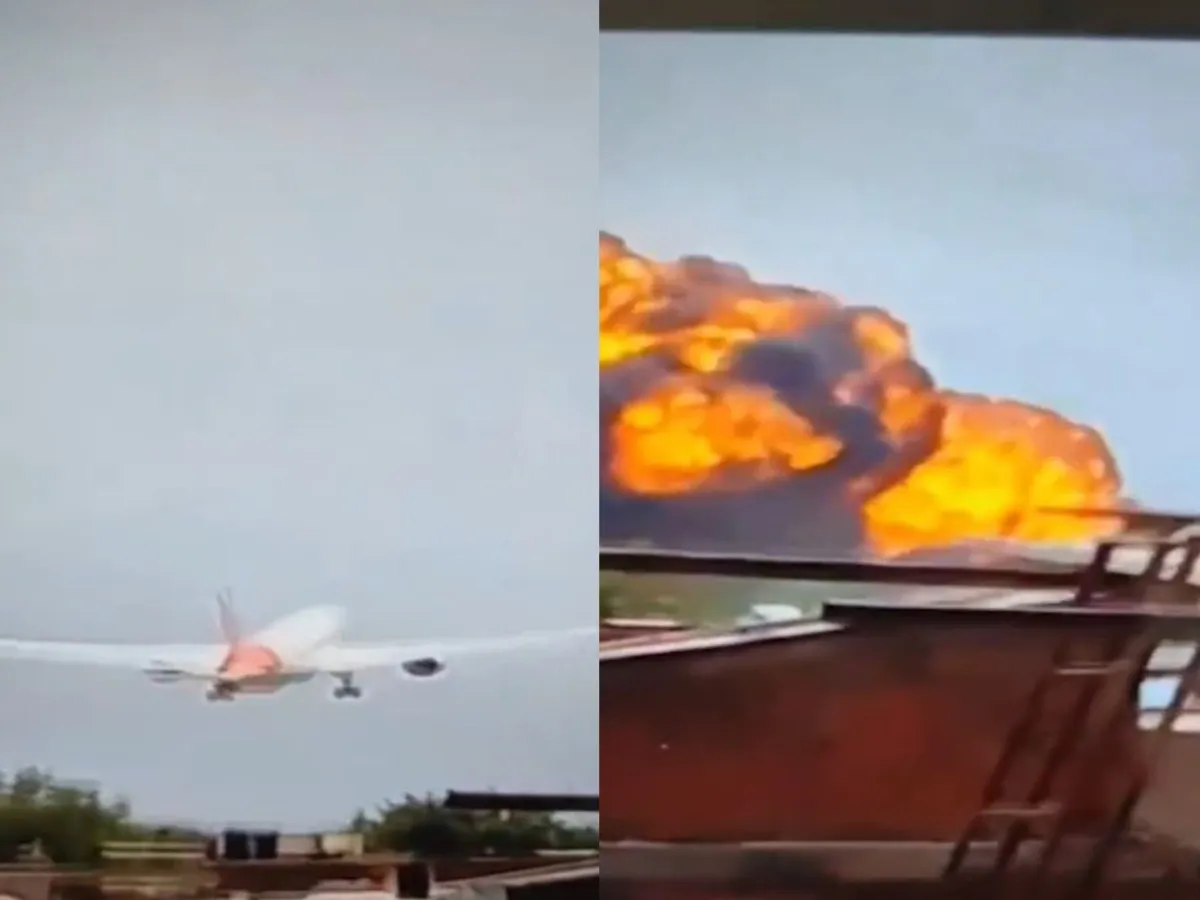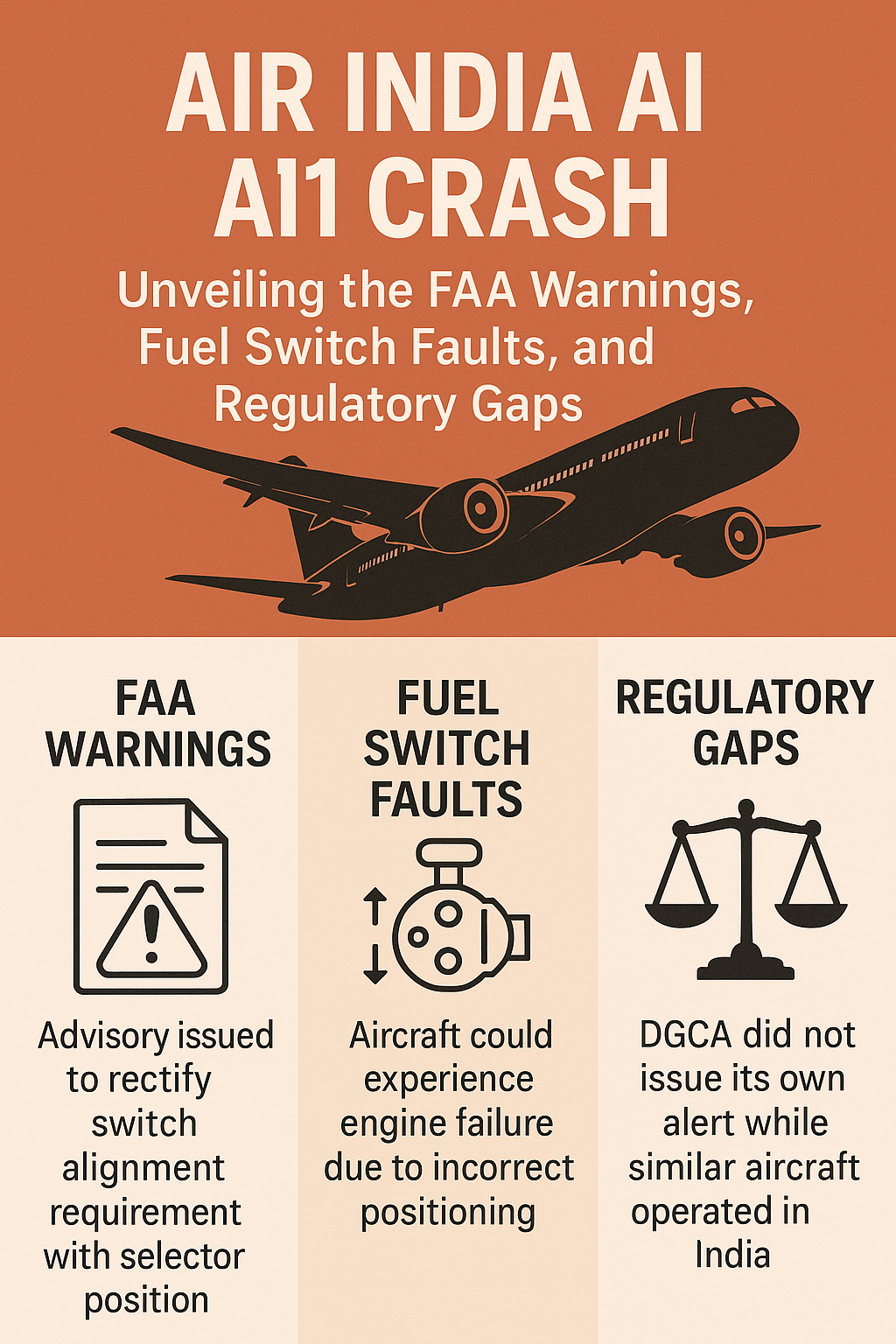Ahmedabad, July 2025 – On the afternoon of 12 June 2025, Air India Flight AI171, a Boeing 787‑8 Dreamliner registered VT‑ANB, embarked on its scheduled flight from Ahmedabad to London Gatwick. Less than two minutes after takeoff, the aircraft tragically collided with ground structures north of the airport, resulting in complete loss of life on board and extensive damage to property. The Aircraft Accident Investigation Bureau (AAIB) of India has now released its preliminary investigation report, presenting alarming technical findings and signaling a complex path ahead for investigators, manufacturers, and regulatory bodies globally.
In this detailed article, we decode every segment of the AAIB’s preliminary findings, enrich them with contextual explanations, aviation expertise, and historical insight, and present what this catastrophe means for Air India, Boeing, and the future of aviation safety.
1. Aircraft & Flight Basics: Who, What, Where, When
Aircraft Type & Registration
- Boeing 787‑8 Dreamliner, registration VT‑ANB
- Manufactured in 2013, with 41,868 flight hours
Flight Route
- Departed: Sardar Vallabhbhai Patel International Airport (VAAH)
- Destination: London Gatwick Airport (EGKK)
- Departure: 13:37 IST, crash at 13:39 IST
Occupants
- 230 passengers
- 10 cabin crew
- 2 flight crew
2. Fatalities, Injuries & Ground Damage
Human Toll
- 241 fatalities onboard
- 19 fatalities on the ground
- 67 serious injuries on the ground
Property Damage
- Five buildings impacted near BJ Medical College
- Extensive fire and structural collapse
3. Air India & Manufacturer Response
Notification & Collaboration
- AAIB, DGCA, and Air India alerted
- NTSB (USA), AAIB (UK), TSB (Canada), and GPIAAF (Portugal) notified
- Teams from Boeing, GE, and FAA dispatched
Appointed Investigators
- Sanjay Kumar Singh – Investigator-in-Charge
- Jasbir Singh Larhga – Chief Investigator
- Additional SMEs included flight recorder analysts, aviation psychologists, engineers
4. Aircraft & Engine History
Airframe
- Boeing 787-8, serial number 36279
- Maintained under Air India’s maintenance program
- Four non-critical Category C MELs, one Category A MEL
Engines
- LH Engine (installed May 2025), RH Engine (installed March 2025)
- Both passed airworthiness and maintenance checks
Fuel Control Advisory
- FAA SAIB NM‑18‑33 issued in 2018 regarding fuel switch locking
- Advisory not implemented—not mandatory
- Switch replacements in 2019 & 2023 were unrelated to fuel switch malfunction
5. Meteorological & Aerodrome Snapshot
Weather at Departure
| Time (IST) | Wind | Visibility | Clouds | Temp | QNH |
|---|---|---|---|---|---|
| 13:00 | 240°/06 kt | 6,000 m | NSC | 36°C | 1001 |
| 13:30 | 250°/07 kt | 6,000 m | NSC | 37°C | 1001 |
Aerodrome Info
- Runway 23: ILS Cat-I, 3505m x 45m
- Airport ARFF: Category 9
6. Sequence of Events: Chronology of a Disaster
- 11:17 IST: VT-ANB lands from Delhi (AI423)
- 12:10 IST: Released for flight after minor issue fixed
- 13:25 IST: Taxi clearance received
- 13:37 IST: Cleared for takeoff
- 13:38:33 IST: Crosses V1 speed (153 Kts)
- 13:38:39 IST: Liftoff detected
- 13:38:42 IST: Both engines shut down via fuel cutoff
- 13:38:47 IST: Ram Air Turbine (RAT) deploys
- 13:39:05 IST: Aircraft crashes
- 13:44:44 IST: Fire & Rescue deployed
7. Critical Findings from Flight Recorders
EAFR & CVR Analysis
- Aft EAFR damaged, Forward EAFR recovered & data downloaded
- Audio captured cockpit exchange:
- “Why did you cutoff?” — “I did not do so.”
Engine Shutdown & RAT Deployment
- Engines shut off within 1 second
- RAT deployed, providing emergency hydraulic power
- Engine 1 relit briefly; Engine 2 failed to recover
8. Impact & Wreckage Distribution
Wreckage Trail
- Initial tree impact, followed by hostel building collision
- Debris field: 1000 x 400 ft
- Nose gear found 307 ft southwest
- Fuselage burned across Buildings A–F
Key Findings
- Flap lever at 5°, consistent with takeoff config
- Landing gear in “DOWN” position
- Thrust levers at idle due to impact; data showed takeoff thrust
9. The Human Element: Crew Profiles
Captain
- 56 y/o male, ATPL holder, 15,638 hours (8,596 on 787)
First Officer
- 32 y/o male, CPL holder, 3,403 hours (1,128 on 787)
Both pilots:
- Well-rested, medically cleared, passed preflight screening
10. Communications & ATC Exchange
| Time (IST) | Event |
|---|---|
| 13:13:00 | Requested pushback/startup |
| 13:25:15 | Taxi clearance granted |
| 13:37:33 | Takeoff clearance issued |
| 13:39:05 | “MAYDAY” call made |
| 13:44:44 | Fire services deployed |
11. Investigative Steps Taken
- Wreckage secured and photographed
- Engines quarantined in hangar
- Fuel samples tested: No anomalies
- Witness interviews and survivor statements recorded
- Post-mortem analysis ongoing for crew and passengers
12. Early Technical Insights & Expert Interpretations
- Both engines’ fuel switches moved to CUTOFF
- SAIB advisory (switch locking design flaw) under scrutiny
- FADEC behavior monitored during relight attempts
- RAT confirms total power loss scenario
13. Human Factors, Crew Response & SOP Compliance
- No clear pilot intent for fuel cutoff
- SOP followed for relight sequence
- Time window too short for engine recovery
- No incapacitation or behavioral failure suspected
14. Preliminary Conclusions & Safety Recommendations
- Dual engine shutdown: Extremely rare and dangerous
- No immediate airworthiness directive issued
- SAIB advisory likely to be revisited
- Investigators exploring mechanical-electrical failure link
15. Contextualizing the Incident in Aviation Safety
- Reminiscent of:
- Asiana 214 (autothrottle)
- Air France 447 (instrument failure)
- Kegworth 1989 (fuel switch error)
- Regulators may issue mandatory design fixes
16. What’s Next: Timeline & Expectations
- Metallurgical and electronic testing continues
- Cockpit transcript analysis
- Safety recommendations by mid-2026
- Airlines and OEMs expected to respond with fleet checks
17. Reflections: Balancing Technical Rigor with Emotional Resonance
This tragedy underscores:
- The complexity of automated systems
- The importance of hardware fail-safes
- The need for international collaboration
We remember every life lost—and pursue answers so it never happens again.
Final Thoughts: Safety Through Transparency
This accident reminds us: aviation safety is a shared responsibility. With rigorous investigation, international cooperation, and swift implementation of safety measures, the legacy of AI171 can lead to stronger, safer skies.
*For official updates, follow [AAIB India]








